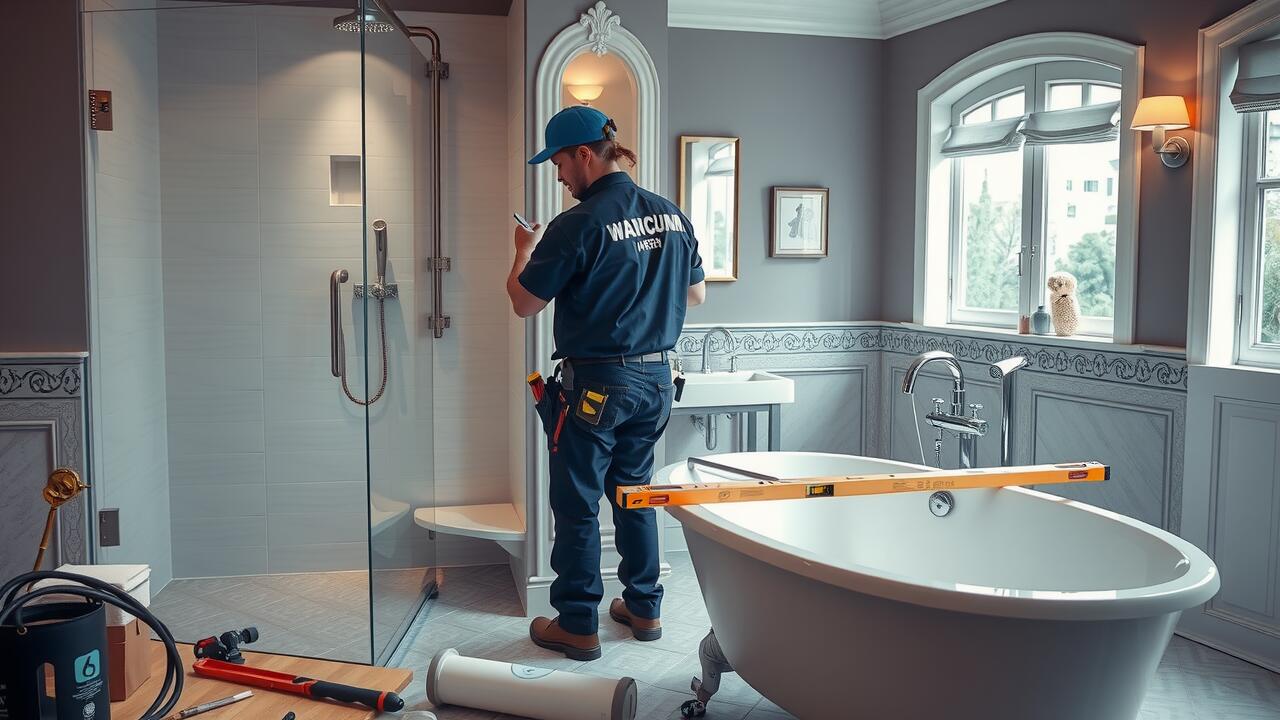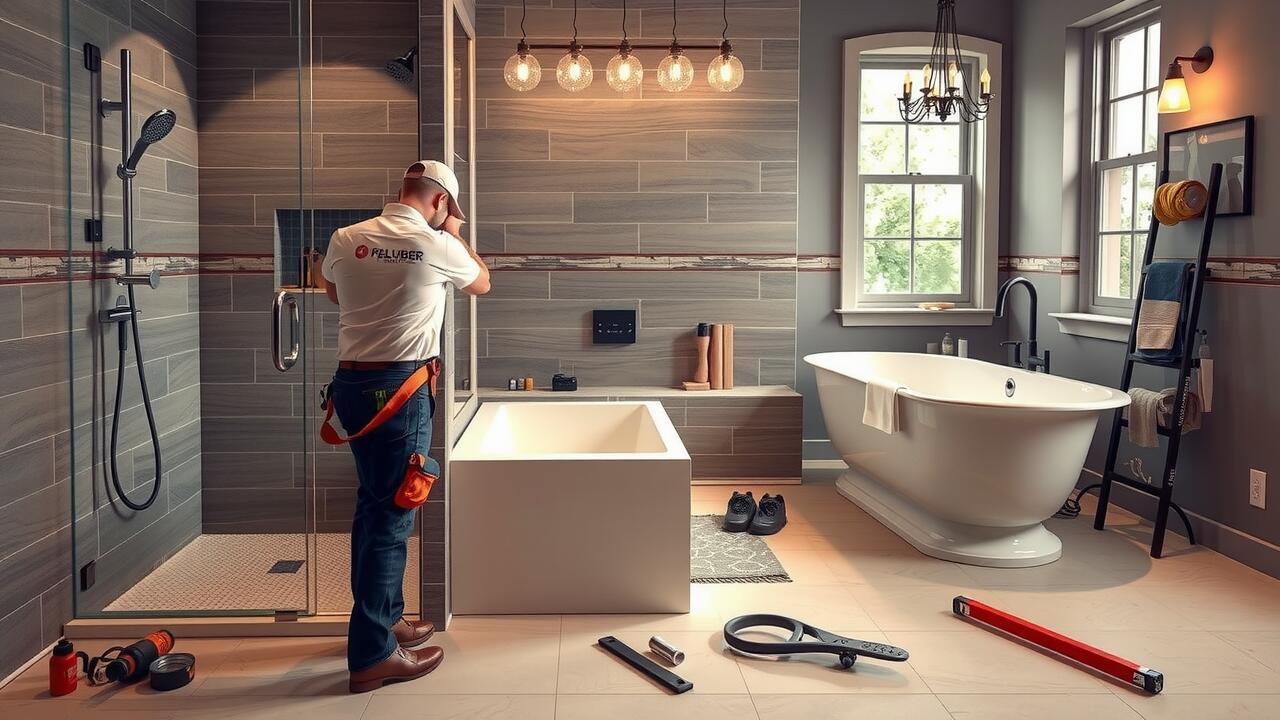
Aesthetic Value and Resale Potential
When considering the aesthetic value of a bathroom, the choice between a shower and bathtub installation can significantly influence the overall look and feel of the space. A modern shower can create a sleek, minimalistic appearance, appealing to contemporary design trends. On the other hand, a luxurious clawfoot bathtub may serve as a stunning centerpiece that evokes a sense of comfort and relaxation, aligning with a more traditional aesthetic. The decision ultimately depends on personal style preferences and the current design of the home.
In terms of resale potential, the inclusivity of both bathing options can attract a wider range of buyers. Families may prefer homes with both a shower and bathtub installation for functionality, while young professionals might be drawn to a refreshing walk-in shower. The right balance can enhance a property’s marketability, providing potential buyers with versatility in their bathing choices. A well-designed bathroom with attractive installations can add significant value, making it a vital consideration for homeowners contemplating renovations.
Which Option Attracts More Buyers?
Potential buyers often have strong preferences when it comes to bathroom fixtures. Showers are generally viewed as modern and convenient, appealing to younger demographics and those with busy lifestyles. In contrast, bathtubs can attract families and older buyers seeking relaxation and comfort. The decision between shower and bathtub installation can significantly influence how quickly a property sells and at what price.
Market trends suggest that homes featuring both a shower and a bathtub tend to draw wider interest. Many buyers appreciate having options, especially in homes targeting families. A versatile bathroom can enhance the overall appeal of a property, making it essential to consider the local housing market trends when deciding on shower and bathtub installation.
Plumbing Requirements for Baths and Showers
Shower and bathtub installation entails different plumbing requirements that homeowners should take into consideration. A bathtub generally necessitates a more complex setup due to its larger size and the need for a dedicated drainage system. In contrast, a shower installation may require less extensive plumbing work, especially when it comes to smaller or prefabricated models. However, depending on the layout of the bathroom and existing plumbing, both options may demand modifications to the current pipes and drainage systems.
In addition to installation specifics, water supply is another critical factor. Both showers and bathtubs need reliable access to hot and cold water, which may involve upgrading existing plumbing lines for optimal performance. Properly assessing water pressure is also imperative. A shower usually needs a higher pressure to ensure a satisfying experience, while bathtubs can function adequately with lower pressure levels. Ensuring compliance with local building codes remains essential as well, as this can impact the overall cost and feasibility of the project.
Upgrades and Modifications Needed
Upgrades and modifications play a significant role when considering shower and bathtub installation. Homeowners may find it necessary to adjust existing plumbing systems to accommodate new fixtures. Such changes could include relocating pipes or enhancing drainage capabilities, particularly if the new shower or bathtub size differs from the previous installation. Additionally, leveling floors or reinforcing walls might be required, especially for heavier bathtubs.
Another aspect to consider is the compatibility of existing tiles and waterproofing materials with the new installation. If a shower is replacing a tub, the surrounding wall tiles may need to be replaced or restored for a seamless look. Moreover, electrical considerations might arise, especially if installing features such as heated floors or additional lighting. These modifications can contribute to the overall cost and complexity of the project, making careful planning essential.
Accessibility Features
When considering accessibility features in bathrooms, both shower and bathtub installations need to be evaluated for their ease of use. Walk-in tubs offer a safer bathing option for individuals with mobility challenges. Low-threshold showers can also provide convenience, ensuring that users can enter and exit without difficulty. The design of these installations can significantly enhance comfort and safety for people with disabilities or elderly individuals who may require additional support.
Shower and bathtub installation aimed at accessibility may require specific modifications that can impact overall costs. Adding grab bars, non-slip surfaces, and benches in the shower can make a significant difference in usability. Homeowners should be prepared for the potential need for professional advice on these enhancements, as the right adjustments can not only improve safety but also ensure compliance with local building codes. Thoughtful planning will contribute to a functional and inclusive space for all users.
Cost Implications of Accessible Installations
Installing accessible bathing solutions, whether a shower or bathtub, often involves additional costs due to specialized features. These may include grab bars, non-slip flooring, and adjustable showerheads, which enhance safety and usability for individuals with mobility challenges. Additionally, the installation process may require modifications to existing plumbing and layout, further contributing to overall expenses.
When considering the cost implications of accessible installations, it’s crucial to account for long-term benefits. While the initial investment may be higher, these upgrades can significantly improve convenience and comfort for users. Moreover, shower and bathtub installation that incorporates accessibility features can also increase a home’s value, appealing to a broader market of potential buyers in the future.
FAQS
Is it generally cheaper to install a bath or a shower?
In most cases, installing a shower tends to be cheaper than installing a bath due to lower material and labour costs. However, prices can vary based on specific designs and installations.
What factors influence the cost of installing a bath or shower?
Several factors can influence the cost, including the complexity of the installation, plumbing requirements, materials chosen, and whether any modifications or upgrades are necessary.
Do baths or showers offer better resale value for homes?
Baths typically appeal to families with young children, while showers are often preferred by younger buyers and those seeking modern designs. The best option depends on your target market and local trends.
Are there any additional costs associated with making baths or showers accessible?
Yes, making baths or showers accessible often involves additional costs for features like grab bars, non-slip surfaces, and potentially larger installations that comply with accessibility standards.
Can I convert my bathtub into a shower to save costs?
Yes, converting a bathtub into a shower can be a cost-effective option, but it requires careful planning and potential plumbing modifications, which may affect the overall expense.
